Travel to Portugal
Day 3 Porto (Ponte Luis I, Sé, Vila Nova de Gaia) (356 Km.)
(in 178 km.) Porto: We go to the north to visit Porto, an ancient city that has a large historical heritage, although during the last decades it has undergone extensive modernization. Its historic center was declared a World Heritage Site by UNESCO in 1996. On the southern margin of the Douro River are located the famous wine cellars, although it no longer belongs to the municipality of Porto but to Vila Nova de Gaia. Once we get to the city, we tried to park in the parking lot next to Dom Luís I Bridge, but it was complete. Although we liked a lot the city, what we liked the least was the number of people who crowded the city, causing large queues at its main tourist attractions.
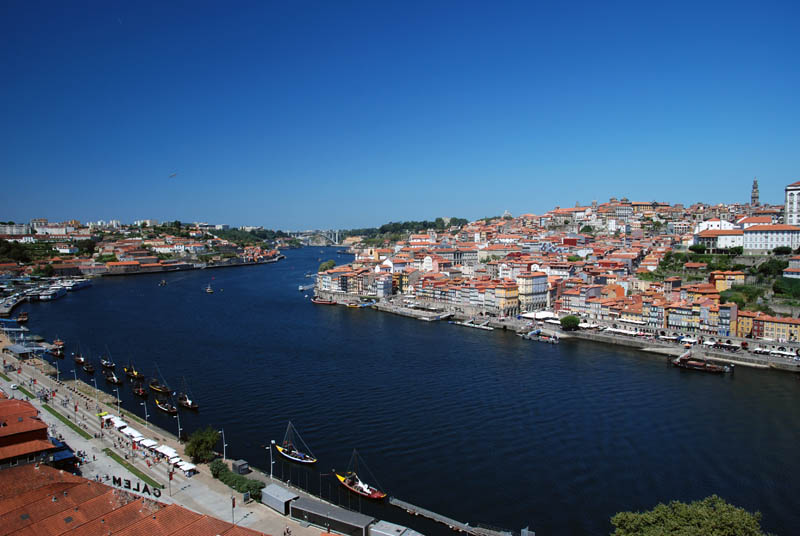
Porto - Views over the Douro
Our first point of interest is the Dom Luís I Bridge, on the Douro River, which links Porto with Vila Nova de Gaia. It was inaugurated in 1886 and is one of the emblematic places of the city. The great feature of the bridge is the large iron arch that it has. It has two decks. The upper one is about 390 meters long and the lower one is approximately 174 meters long. While the D tram line of the Porto Metro passes through the upper one, the road below is dedicated to other vehicles such as cars, buses or trucks. There are walkways so that people can pass on both decks. Because of its fame and beauty, the bridge gathers a large number of tourists. The views of the upper deck offer visitors a panoramic view of the Douro River as it passes through the city. We crossed the bridge on the top deck in the direction of Sé.
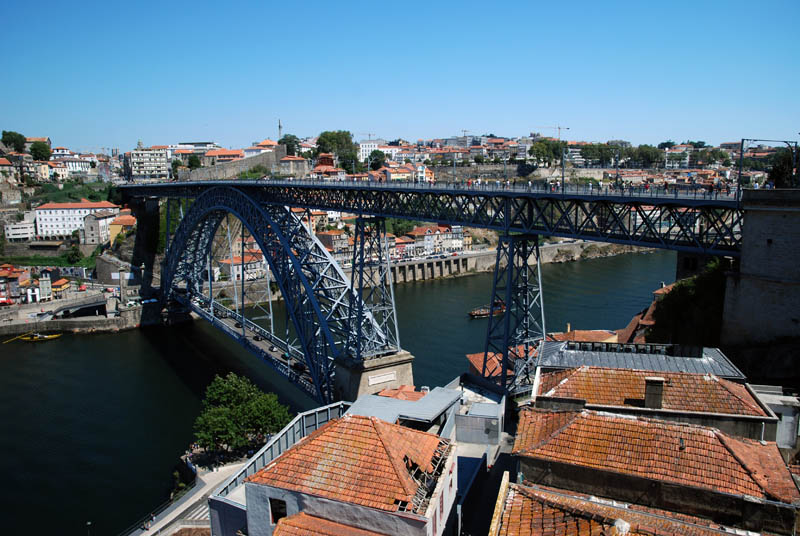
Porto - Dom Luís I Bridge
While crossing the bridge, we see on the right the Fernandina walls, fortifications that protected and surrounded the city of Porto. Porto Cathedral (in Portuguese, Sé do Porto) is located in the heart of the historic city center and is one of its main and oldest monuments. Its construction dates from the first half of the 12th century, and lasted until the beginning of the 13th century. That first building, Romanesque style, suffered many alterations over the centuries. From the Romanesque period date the general character of the facade with the towers and the beautiful rose window, in addition to the body of the church with three naves covered with barrel vaulting. The exterior of the cathedral was very modified in the Baroque period. Around 1772 a new portal was built to replace the original Romanesque. The main altar, built between 1727 and 1729, is an important work of the Portuguese Baroque. The south transept gives access to the cloisters of the fourteenth century and the Capela de São Vicente. The Cathedral has three beautiful organs.
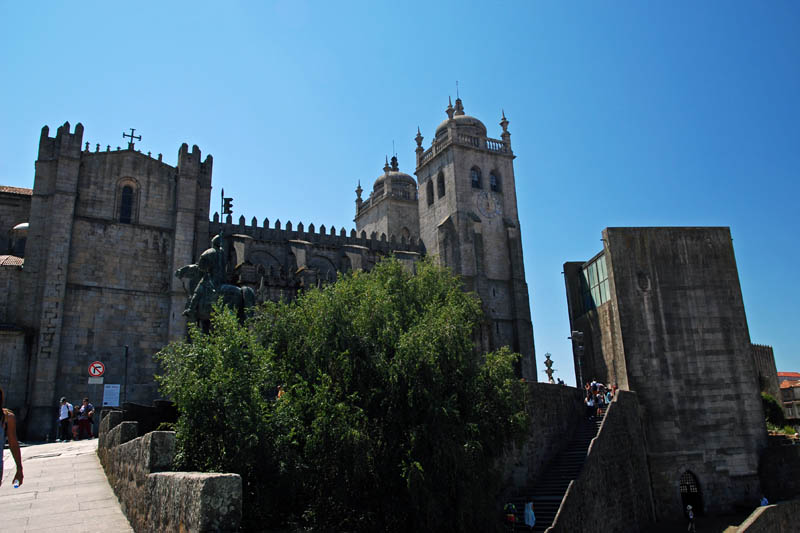
Porto - Sé (cathedral)
After strolling through the narrow downtown streets, we continue along the commercial Rua de Mouzinho da Silveira until we reach the Praça de Almeida Garrett square where the Porto-São Bento Train Station is located (in Portuguese, Estação Ferroviária de Porto-São Bento), considered by several sites and magazines as one of the most beautiful train stations in Europe and in the World. Although the first train arrived on November 7, 1896, the station was only officially opened in 1916. The building, with French influence, is one of the most important works of art of the early twentieth century. It is by the architect José Marques da Silva and its atrium is lined with twenty thousand tiles (551 square meters) with historical representations of the North of the Country by the painter Jorge Colaço installed between 1905 and 1906. Among other topics, we can see the battle of Valdevez, the entry of King Juan I and Felipa de Lancaster in Porto, the conquest of Ceuta in 1415 and life in the countryside.
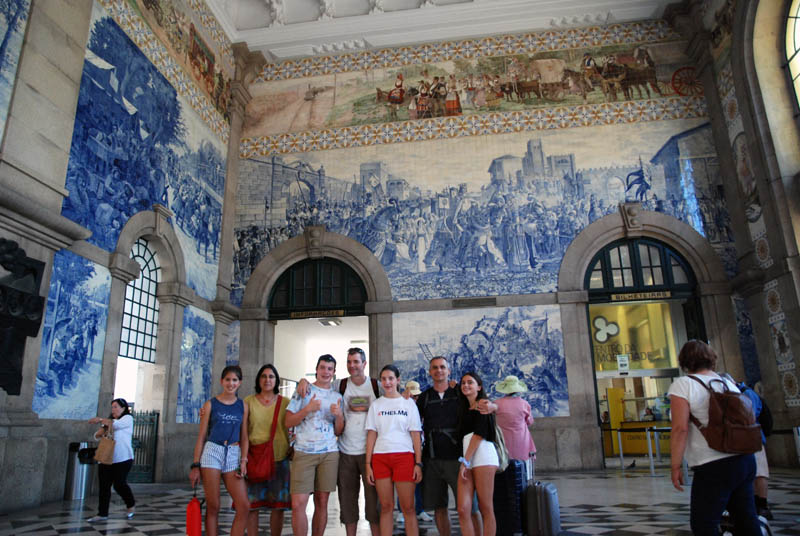
Porto - Porto-São Bento Train Station
After passing just in front of the Praça da Liberdade, we ascend Rua dos Clérigos until we reach the Clérigos Church and tower. Both the church and the tower are the work of Nicolau Nasoni, one of the greatest exponents of Baroque art in the Portuguese city. It began to be built in 1754 and was completed in 1763. Although the facade of the church is lavishly decorated, the real gem of the building is its 76-meter-high tower, made of granite, which can be climbed, thanks to the interior staircase of more than 240 steps, to contemplate the best panoramic views of Porto and its surroundings. Classified as a National Monument since 1910, the Clérigos Tower is one of the main symbols of the city. In 2013, Portugal dedicated a 2 € commemorative coin to it.
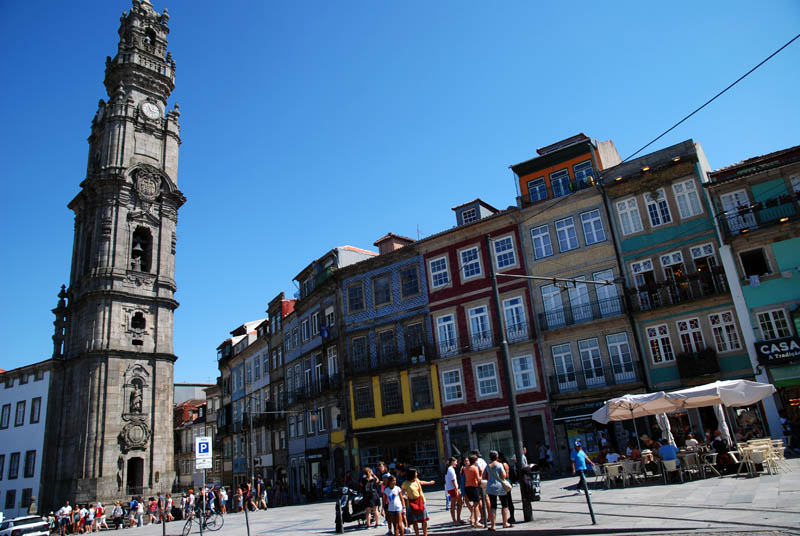
Porto - Clérigos tower
After crossing Praça da Lisboa, we arrive at the Lello bookstore. By virtue of its historical and artistic value, the bookstore has been recognized as one of the most beautiful in the world by various personalities and entities. Designed according to the project of the engineer Xavier Esteves, the Lello Library is one of the most emblematic buildings of the Neo-Gothic of Porto. The façade has a large bated arch, with a central entrance and two side windows. Above, three rectangular windows flanked by two painted figures by José Bielman, representing "Art" and "Science". Inside, the broken arches lean on the pillars where, under baldachins, the sculptor Romão Júnior carved the busts of various writers. The carved ceilings, the large glass that holds the monogram and the slogan of the library "Decus in Labore" and the large staircase, which give access to the first floor, are the most significant brands of the library.
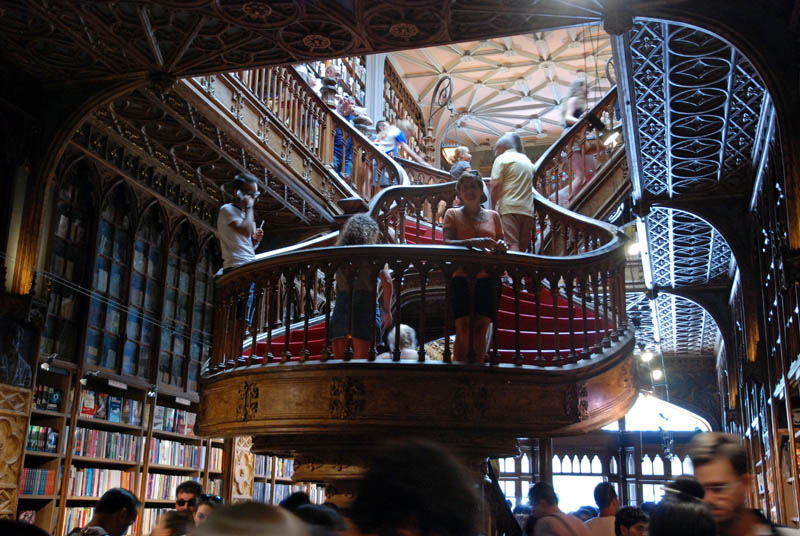
Porto - Lello bookstore
We start our way back through the square of Jardim do Infante Dom Henrique, where we find two buildings of tourist interest, the Stock Exchange Palace and the church of San Francisco. The church, from the beginning of the 14th century, is built in granite, and its architecture shows Romanesque and Gothic elements. The portico is of Baroque style, built between the XVII-XVIII centuries. The Stock Exchange Palace is a neoclassical building built in 1842 by the architect Joaquim da Costa Lima as the headquarters of the Commercial Association of Porto. The wide and picturesque Arab Room inspired by the palace of the Alhambra in Granada in Spain, whose construction began in 1862, where its rich decoration is enhanced by lighting, which produces beautiful chromatic effects, is also the Nations' Courtyard ( Patio das Nações) completely glazed, the Presidential Hall (Sala do Presidente), the Library with more than 10,000 volumes.
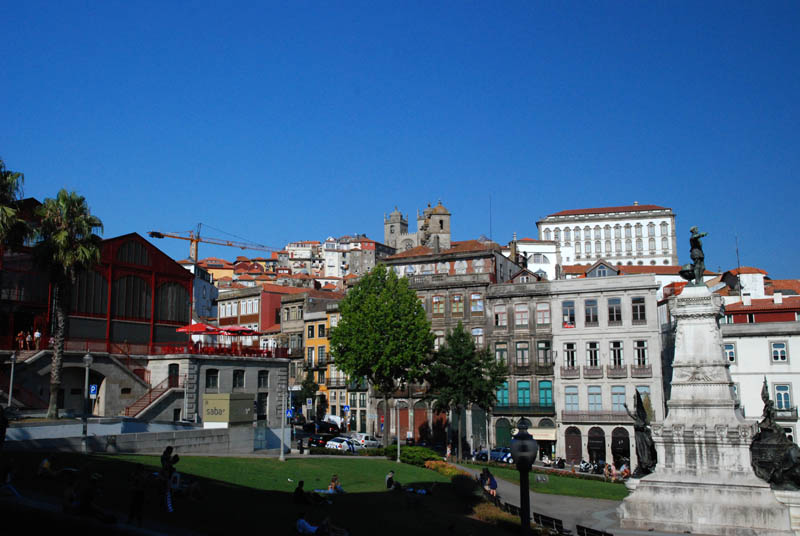
Porto - Jardim do Infante Dom Henrique
On the way back to the car park, we walk along Bairro da Ribeira next to the Douro and cross the Dom Luís I Bridge again, this time on its lower deck. Once in Vila Nova de Gaia we try to visit the Calem wineries, but there are no tickets left. We have to settle for a tasting of their wines from Porto in the tasting area they have next to the exit of the winery visits. It has been a quick visit to the city and we know that we have to return to it to be able to enjoy it more calmly.
(in 178 km.) Sazes da Beira: We return to our accommodation.